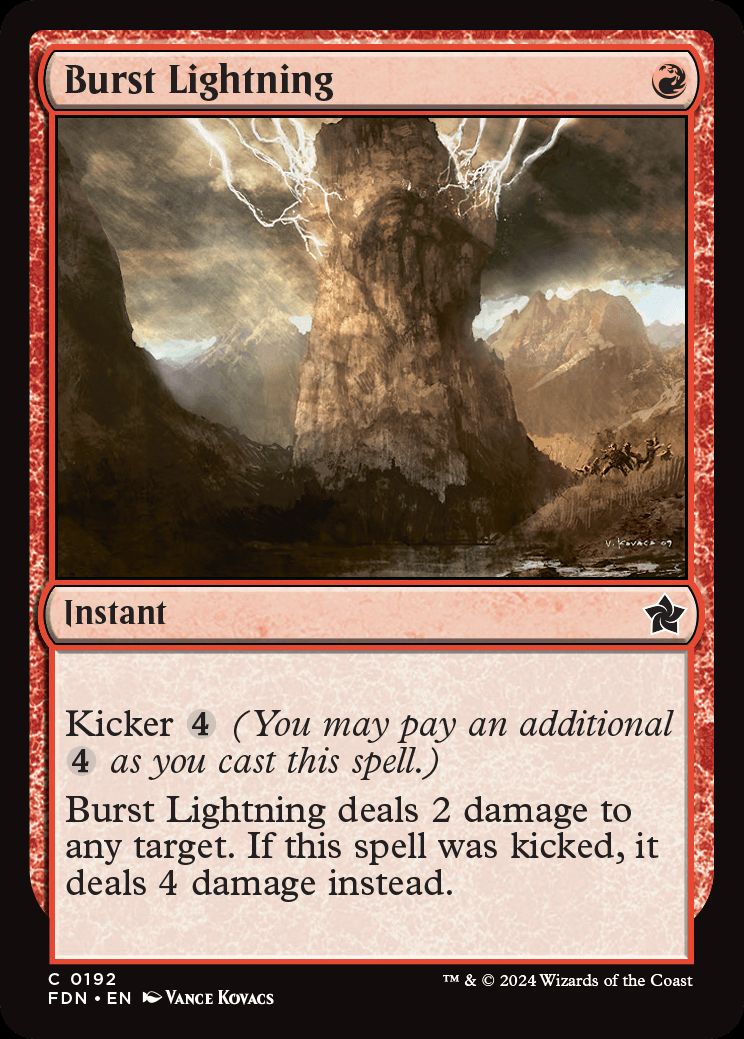The best way to get into Magic: The Gathering is being handed a shoebox of old cards, but the second-best way is Foundations' Starter Collection
It's a shoebox in a box.

My friend's 10-year-old son recently decided he's not interested in playing the Pokémon Trading Card Game any more and he wants to play Magic: The Gathering instead. Is helping him put together a whole collection of Magic cards to build decks with going to be a long and expensive process? Well, no. His mother has friends who used to be into Magic—they still play Commander on the regular—and have stacks of old cards they don't need. And so they happily donated a shoebox full of cards to her son.
It's a common origin story among Magic players. An older sibling or cousin, a workmate who is about to move house, a random garage sale—somebody somewhere has a bunch of Magic: The Gathering cards they'll part with, and that leg-up gives you an in. You go through those cards and discover synergies, you put all your favorites together and then you learn the hard way about mana curve, and slowly you get better.
But not everyone gets that experience. If you don't know people with nerdy hobbies, or you live in a small town without a lot of Magic players, or you just don't get lucky on Facebook Marketplace, then you're going to miss out on finding that milk crate full of second-hand cardboard. Enter the Starter Collection, which is basically a shoebox full of Magic cards you can just go and buy in a shop.
While it'll cost more than the one you discover in a second-hand store, it's also got some advantages over a bundle of scuffed cards held together by rubber bands. For starters all the cards are from Foundations, which is the new core set the next several years of Magic will be balanced around. You get 387 cards including 90 basic lands spread across all the colors and full of reprints of well-loved classics like Giant Growth, Juggernaut, Burst Lightning, Llanowar Elves, and Hero's Downfall. You also get three 14-card booster packs from the Foundations set so you can learn what it's like to crack open a pack and find, say, a Shivan Dragon.
I played a game using the Starter Collection at a prerelease event, putting together a monocolor white deck against a likewise monocolor green deck. It felt like a classic showdown between the archetypes, with both of us racing to see who would get their army of creatures out first, my cats or their dinosaurs. I got lucky and followed some cats—Savannah Lions, Ajani's Pridemate, and some free Cat Beasts courtesy of Felidar Retreat—with Regal Caracal, which gives all cats +1/+1 and lifelink, and Dawnwing Marshal, which gave all my creatures another +1/+1 on top of that for a turn. It was a decisive victory, but probably wouldn't have been if my opponent pulled together enough mana to bring out their Gigantosaurus before I found every feline in the state, rolled them up into a big hissy ball, and bowled them.








After playing more recent sets, it's a relief to field cards with straightforward interactions and not much text on them that play to the archetypes of each color. If you remember what the colors were like in the early days of Magic, or you've just absorbed that knowledge second-hand via the videogames and the stories of old-timers, you'll appreciate the way green decks go tall, blue decks are full of wizard nonsense and merfolk, red decks slap you with goblins who have haste, black decks just murder creatures, and you can roll over someone with a white deck full of angry cats.
It's a solid way into Commander as well. While Magic's popular four-player format demands you put together a deck of 100 cards to play, almost every Commander deck will benefit from having Arcane Signet, Command Tower, and Sol Ring in it. Would you look at that—all three of those cards are in the Starter Collection.
The biggest gaming news, reviews and hardware deals
Keep up to date with the most important stories and the best deals, as picked by the PC Gamer team.
The alternative offered as part of Foundations is the Beginner Box, which is an introduction to Magic that dresses like a board game and plays like a videogame tutorial. While that'll be a valuable tool for getting people who've never cracked a booster pack into Magic, the Starter Collection is more of a second step, something that will appeal to people who already understand the concepts of deckbuilding games and just want to get on with it.
At the same time, it also appeals to people like me who already play Magic but want some building-block cards to construct future decks around. And if there's anything in the box I don't want, I know a 10-year-old who will find a use for them.
Foundations will be available from November 15.

Jody's first computer was a Commodore 64, so he remembers having to use a code wheel to play Pool of Radiance. A former music journalist who interviewed everyone from Giorgio Moroder to Trent Reznor, Jody also co-hosted Australia's first radio show about videogames, Zed Games. He's written for Rock Paper Shotgun, The Big Issue, GamesRadar, Zam, Glixel, Five Out of Ten Magazine, and Playboy.com, whose cheques with the bunny logo made for fun conversations at the bank. Jody's first article for PC Gamer was about the audio of Alien Isolation, published in 2015, and since then he's written about why Silent Hill belongs on PC, why Recettear: An Item Shop's Tale is the best fantasy shopkeeper tycoon game, and how weird Lost Ark can get. Jody edited PC Gamer Indie from 2017 to 2018, and he eventually lived up to his promise to play every Warhammer videogame.

